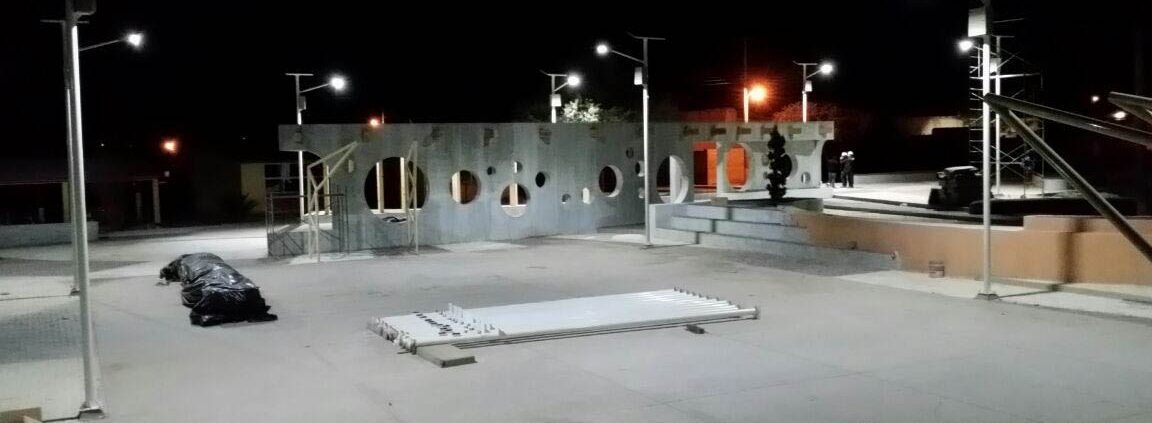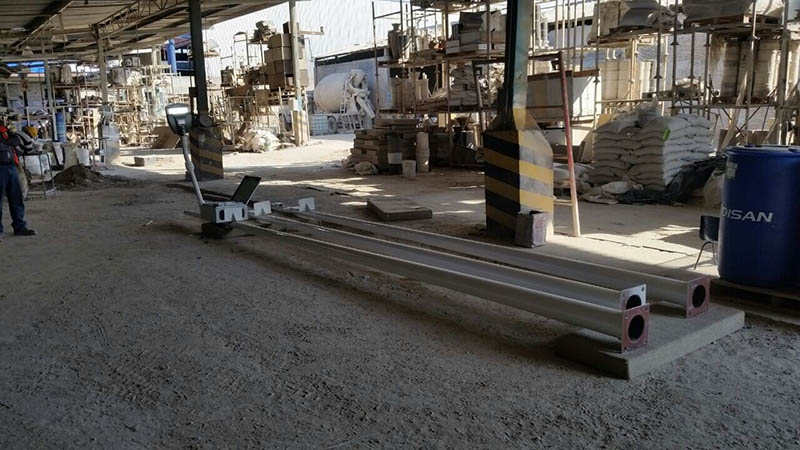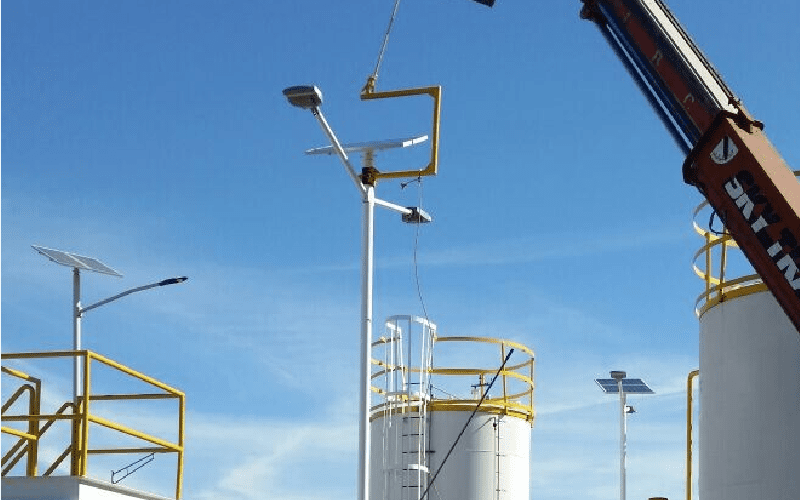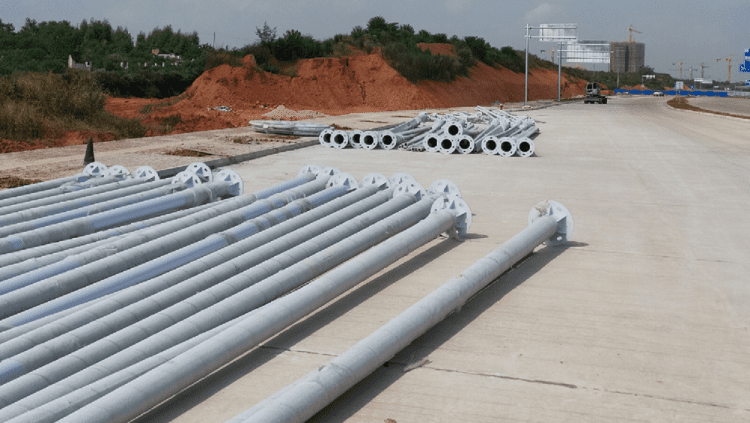Richtlinien und Einzelheiten zum Entwurf von Solar-Straßenlaternenmasten – Stadt und Landkreis
Der Solar-Straßenlaternenmast besteht normalerweise aus Stahl, der sich durch Schönheit, Haltbarkeit, Stabilität, einfache Herstellung verschiedener Formen, einfache Verarbeitungstechnologie und hohe mechanische Festigkeit auszeichnet.
Gegenwärtig werden immer mehr Bauernhöfe, Höfe, Landstraßen und städtische Gemeinden mit Solar-Straßenlaternen. Da die Solar-Straßenlaternen lange Zeit im Freien ausgesetzt sind, ist die Leistung der laternenmast selbst muss den Zoll passieren, sonst besteht die Gefahr, dass es in der Sonne und im Regen rostet, was nicht nur die Ästhetik beeinträchtigt, sondern auch das Risiko erhöht. Im Folgenden finden Sie einige grundlegende Anforderungen für die Unterstützung der Masten, die üblicherweise zur Unterstützung von Solarstraßenlaternen verwendet werden.
Die Querschnittsformen der häufig verwendeten konischen Lichtmasten sind rund und sechseckig, manche verwenden auch achteckige Formen. Die Verjüngung beträgt meist 1:90 und 1:100. Die Wandstärke beträgt je nach Belastung des Lampenmasts im Allgemeinen 3–5 mm.
Die Arbeitsumgebung der Solarstraßenlaterne ist im Freien, daher sind die Anforderungen an die Unterstützung des Laternenpfahls besser. Um zu verhindern, dass der Laternenpfahl rostet und korrodiert und die strukturelle Festigkeit verringert, muss der Laternenpfahl korrosionsbeständig sein.
Die Korrosionsschutzmethode besteht hauptsächlich darin, einige vorbeugende Maßnahmen gegen die Ursache von Rost zu ergreifen. Die Korrosionsschutzmethode sollte die Auswirkungen von Feuchtigkeit, Oxidation, hohen Temperaturen, Chlorid und anderen Faktoren vermeiden oder verlangsamen. Die gängigen Methoden sind wie folgt:
- Kunststoff-Sprühbehandlung: Kunststoff-Sprühbehandlung nach dem Feuerverzinken. Das Kunststoff-Sprühpulver sollte für den Außenbereich ausgewählt werden und die Beschichtung sollte nicht abblättern oder Risse aufweisen. Eine Kunststoff-Sprühbehandlung kann die Korrosionsbeständigkeit des Stahlmasts verbessern und die Schönheit und Dekoration des Lampenmasts erheblich verbessern. Auch die Farbe kann vielfältig gewählt werden.
- Feuerverzinken: Verfahren und Methode zum Eintauchen der vorverarbeiteten Teile in die geschmolzene Zinklösung, um eine Beschichtung aus Zink und Zink-Eisen-Legierung auf der Oberfläche zu bilden. Die Dicke der Zinkschicht beträgt 65–90 µm. Die Zinkschicht der verzinkten Teile sollte gleichmäßig, glatt, frei von Graten, Tropfen und übermäßiger Agglomeration sein. Die Zinkschicht sollte fest mit der Stahlstange verbunden sein und sich nicht ablösen oder wölben.
Da der Solar-Straßenlaternen-Controller und andere elektrische Teile im Laternenmast installiert sind (einige Batterien sind im Inneren eines Laternenmasts installiert), müssen Sie auch darauf achten, dass der Laternenmast wasserdicht und diebstahlsicher ist, um zu verhindern, dass in den Laternenmast eindringender Regen elektrische Ausfälle verursacht. Vermeiden Sie für die Wartung die Verwendung herkömmlicher Werkzeuge, die das Öffnen ermöglichen (z. B. Innensechskantschrauben, Zangen usw.), um Diebstahl oder Beschädigungen vorzubeugen.
Verwandte Artikel:
https://luxmanlight.com/how-to-choose-the-best-solar-street-light-factory-in-china//





